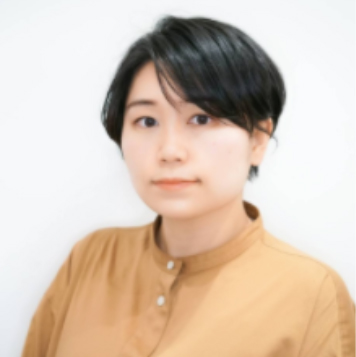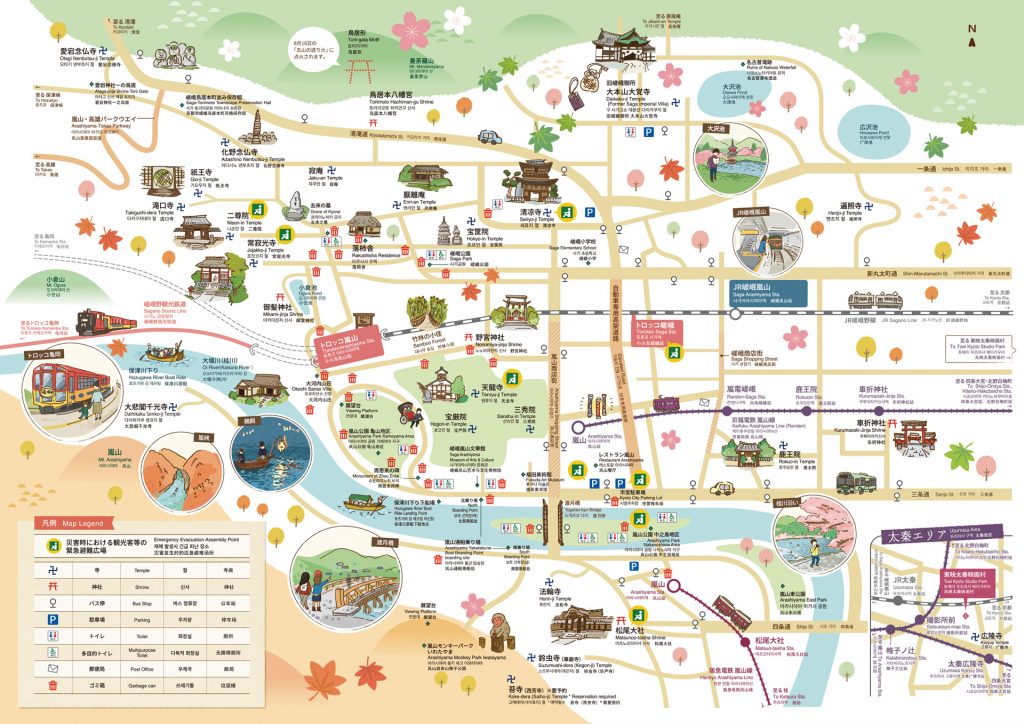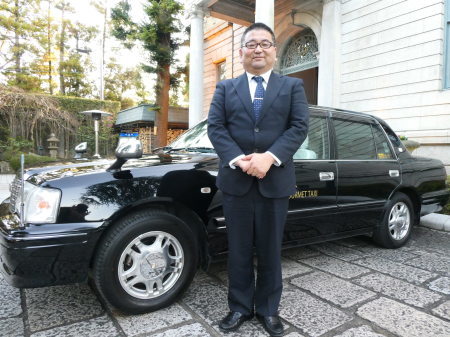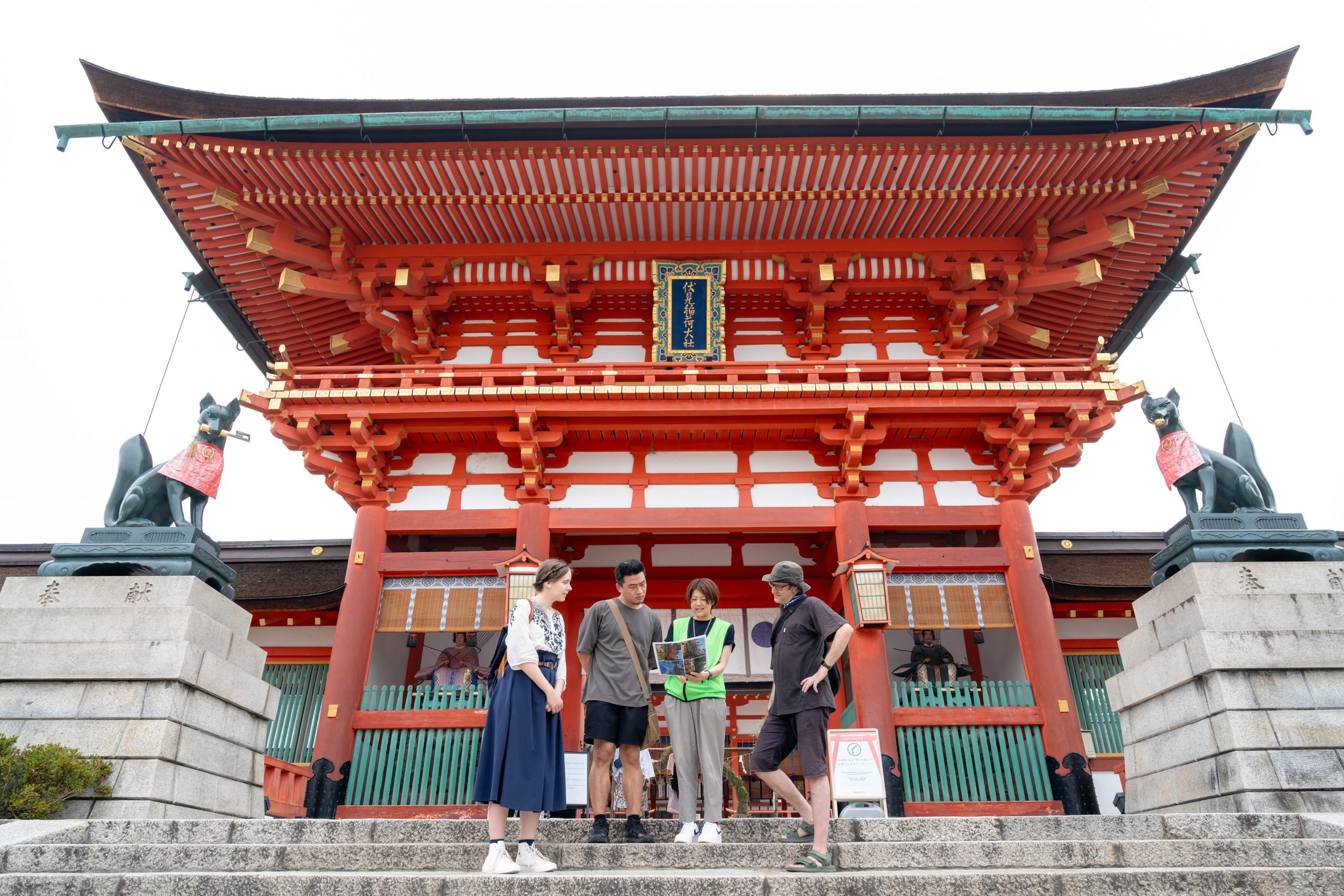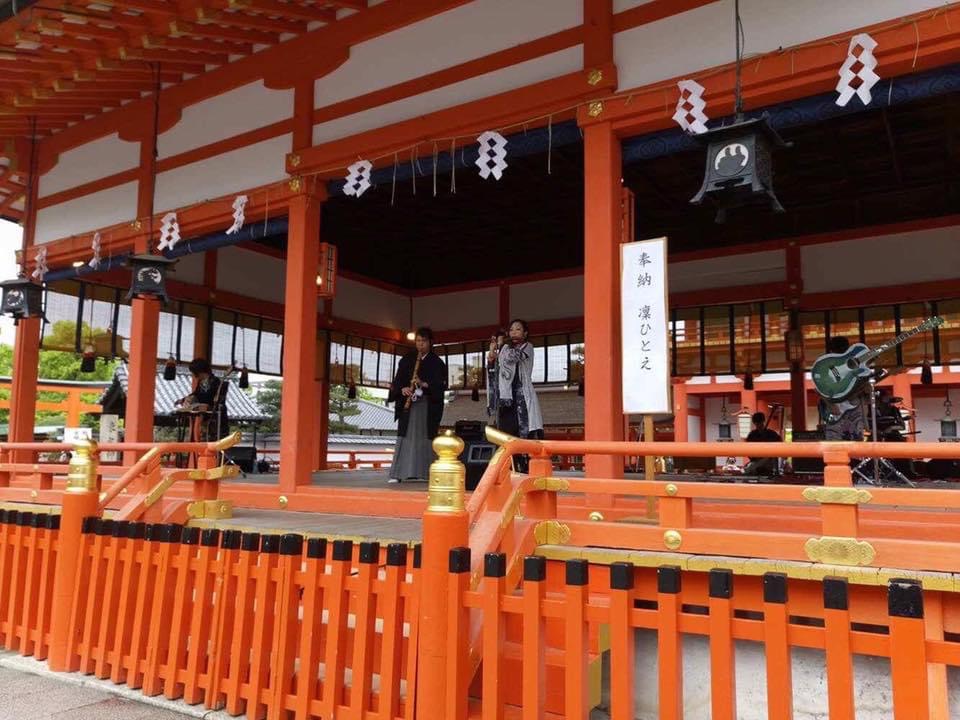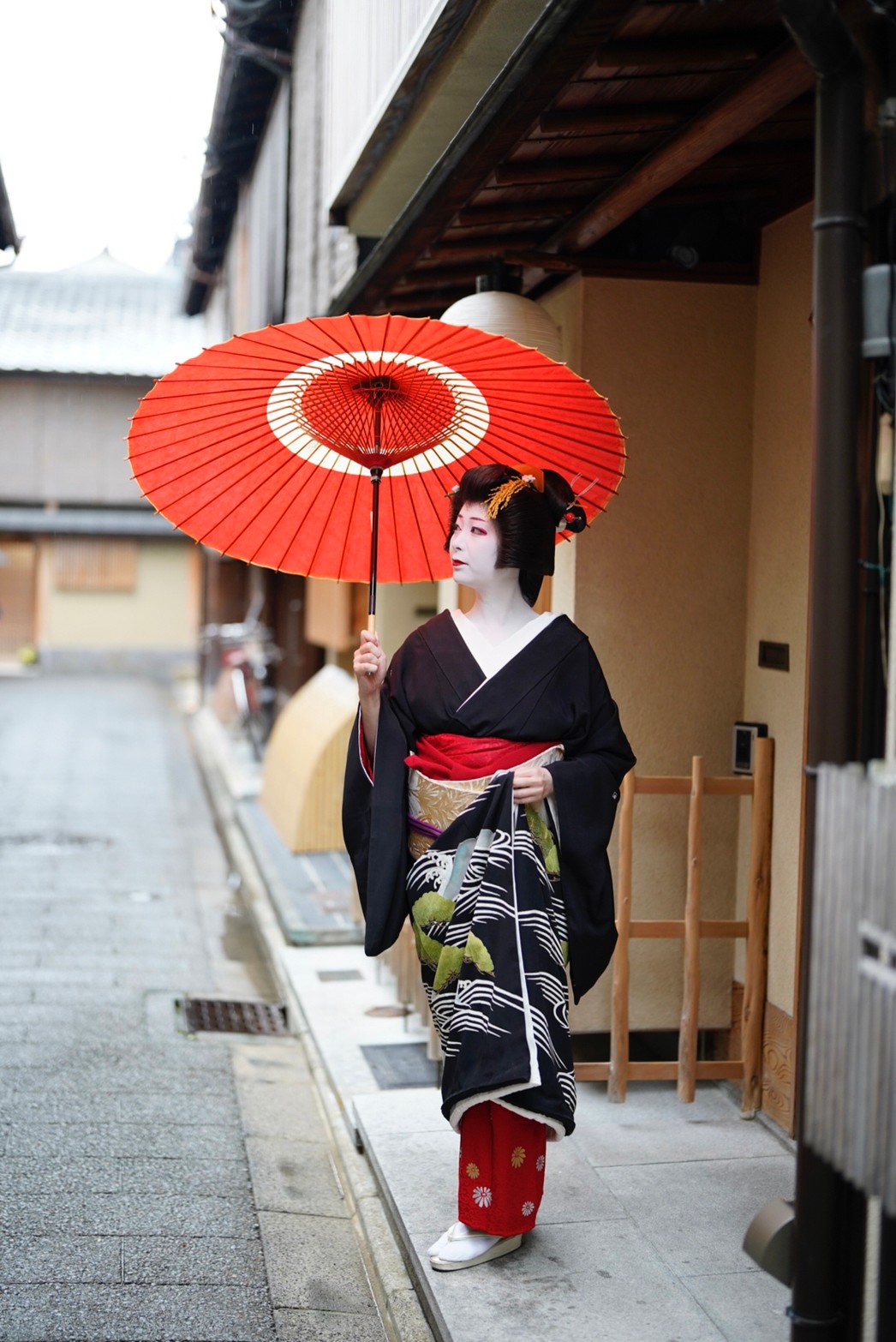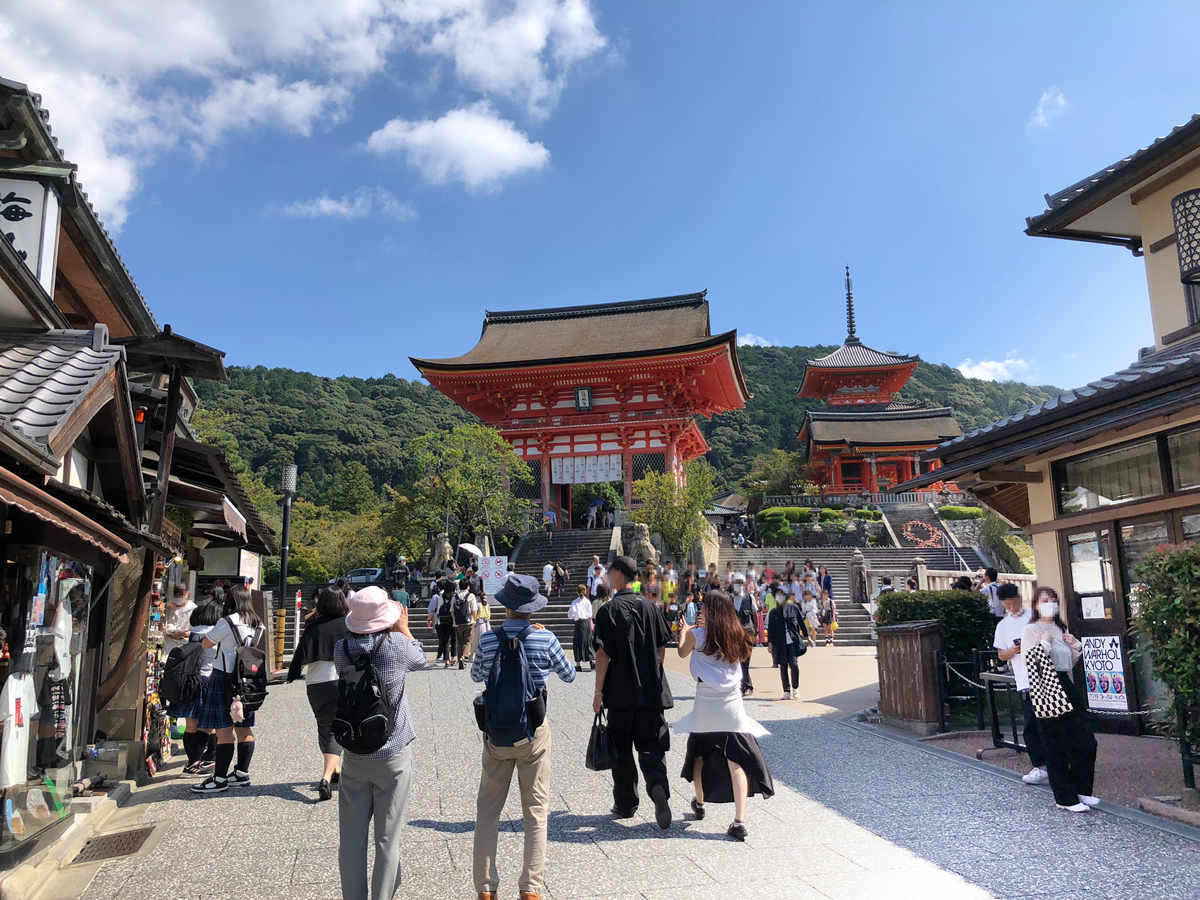
Kyoto is experiencing some problems related to tourist etiquette and issues between tourists and local residents. In order for you to enjoy your trip and create many wonderful memories, it is important for you, as a tourist, to display good manners. We have compiled this list of things to keep in mind when sightseeing in different areas of Kyoto, as well as other useful information.
Please take a look at it before you embark on your travels.
Basic Rules for Sightseeing in Kyoto
These are by no means limited to Kyoto, but let’s first review the basic rules that are a must when visiting a tourist destination.
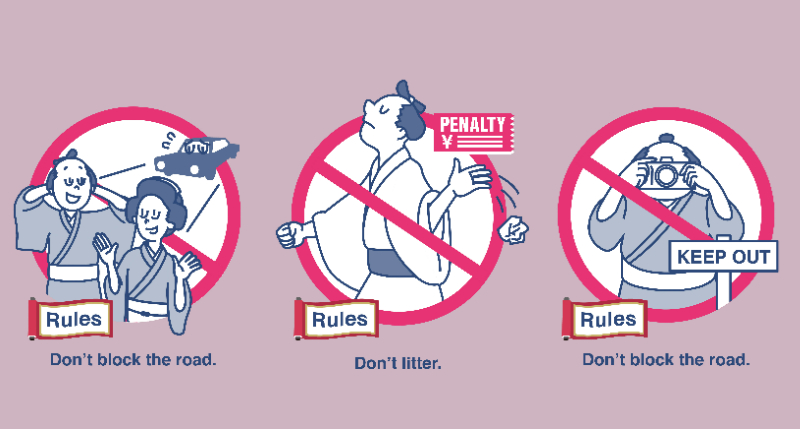
A little thoughtfulness and consideration go a long way
Rule #1: Don’t Block the Road
Popular areas of Kyoto, such as Kiyomizudera Monzen, Nishiki Market, and Arashiyama, are visited by large numbers of people. The same can be said for any street, but especially in places with lots of people on the go, try not to get in the way of people by stopping to talk or getting carried away with taking photos. Such behavior can be a nuisance to other people, and it can also lead to falls or other dangers. It’s a good idea to be extra careful during the cherry blossom, autumn foliage, and Gion Festival seasons.
Rule #2: Don’t Litter
Do your part to keep the scenery beautiful by always throwing away your trash in a trash can or putting it in a bag and taking it back with you. Kyoto City has enacted an ordinance that designates 43 areas, mainly tourist spots such as Arashiyama and Fushimi Inari Taisha Shrine, as “Beautification Promotion Areas”, and those who violate the ordinance can face fines of up to 30,000 yen.
Rule #3: Get Permission Before Taking Photos or Videos
Photography using drones is prohibited (under Japan’s Civil Aeronautics Act, the vast majority of Kyoto City is considered a densely populated area where drone flying is prohibited). In some shrines and temples, there are areas where photography is not allowed or where flash photography is prohibited. Be sure to check the signs carefully. Please refrain from photographing the maiko, as this is a nuisance to them.
Check the sightseeing manners for each area and discover smart tips!
While Kyoto is a famous tourist destination, it is home to a number of different areas, each of them with their own unique characteristics. From here, we’re going to go over what to expect at each of these areas.
Kyoto Station

Kyoto Station, a place bustling with travelers and their baggage
The gateway to Kyoto, Kyoto Station, is the starting point for many sightseeing journeys. Carrying a bunch of suitcases and souvenirs can make it hard to get around. In times like this, “Hands-Free Travel” is just what you need. At a Hands-Free Travel counter, you can have your luggage transported from Kyoto Station to your accommodation or store luggage that won’t fit in a locker.
Taking large luggage onto buses or trains can be a nuisance to other passengers. Especially in Kyoto City, please refrain from taking large luggage onto city buses. Utilizing this Hands-Free Travel service lets you enjoy your travels safely and more easily.
Smart Tip: Free Wi-Fi and charging spots!
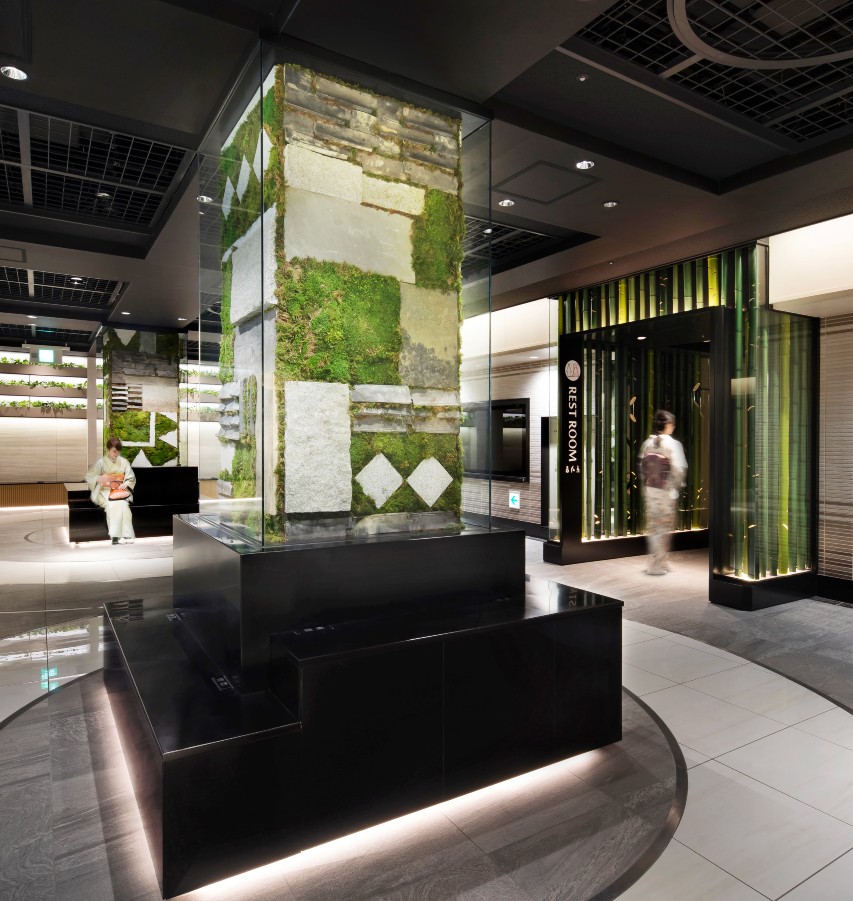
Yorimichi Square Photo provided by: JR West Japan Shopping Center Development Company
At Yorimichi Square in the PORTA underground shopping center at Kyoto Station (just underneath Kyoto Central Post Office), there is a rest area where most of the seats have outlets for charging your smartphone. Free Wi-Fi is also available here, so please feel free to use this area when needed and take a moment to look up your destination.
Kiyomizudera Monzen
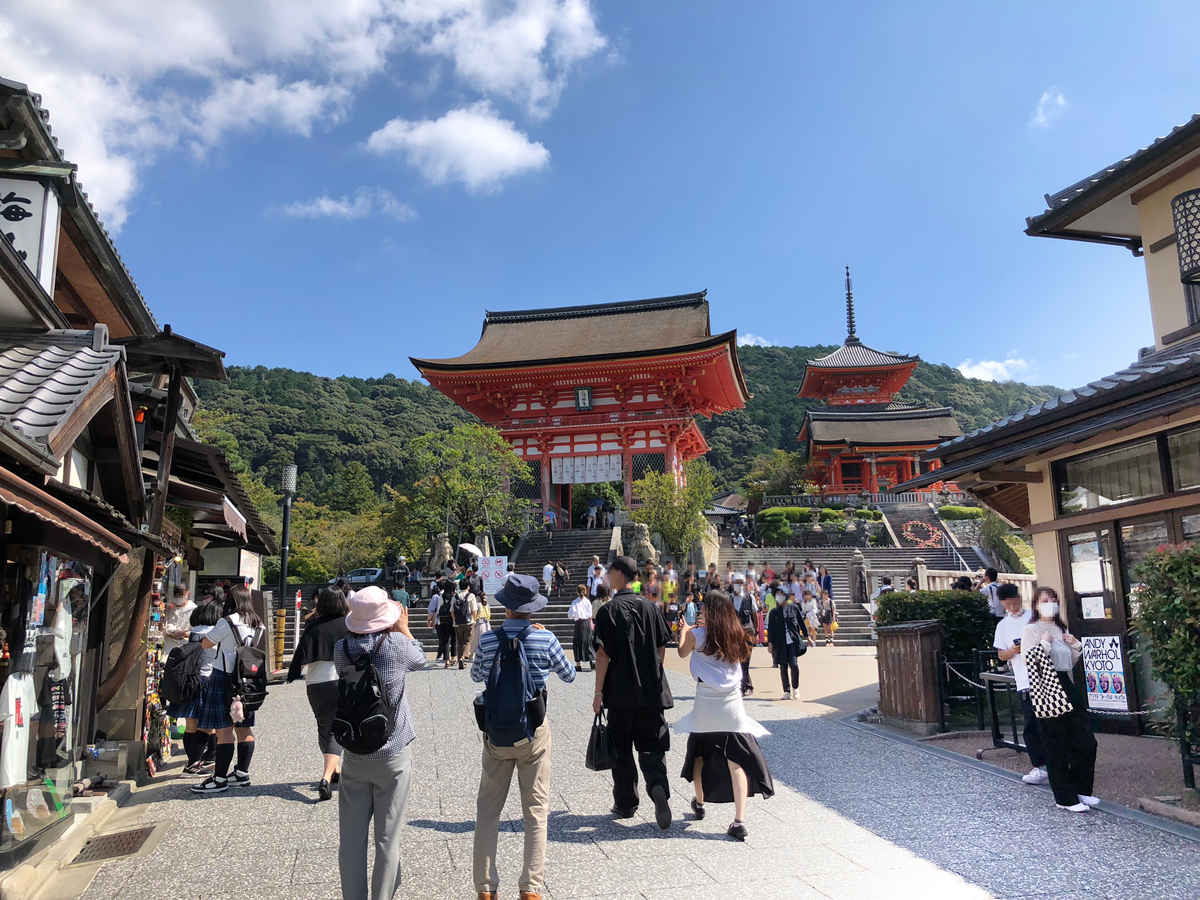
Must-see spots when you visit Kyoto in and around Kiyomizu Temple
Kiyomizu Temple and its vicinity are a classic Kyoto sightseeing destination. The roads leading from Kodaiji Temple to Kiyomizu Temple are called Ichinenzaka, Ninenzaka, and Sanneizaka.
What you need to be careful about here is smoking on the street, littering, and spending a long time taking photos. Please do not throw away any food you’ve purchased, and make sure you don’t get in the way of traffic when trying to take a good picture.
Smart tip: This easy-access route to Kiyomizu Temple is great for an early-morning visit!
This is a very crowded area, and parking is scarce, so the best way to get here is to use public transit to get to Kiyomizudera Monzen. Kiyomizu Temple opens at 6:00 in the morning, and visiting at a time when there are few people is a smart idea.
Easy-Access Route to Kiyomizu Temple (1)
Easy-Access Route to Kiyomizu Temple (2)
Nishiki Market

Nishiki Market, the famous “Kitchen of Kyoto”
Nishiki Market is lined with shops offering delicious foods such as rolled omelettes, hamo (daggertooth pike conger) tempura, namafu (steamed wheat gluten and rice flour), takoyaki (octopus dumplings), and more. Please note that walking around the market while eating or drinking things you’ve bought there is strictly prohibited. Instead, try to eat in the area in front of the store, or in the in-store eating areas.
Also, be sure to throw away any trash in the trash cans of the shop where you purchased the item. To get an idea of what you’re looking for, check out the Nishiki Market map and store information below.
Smart tip: Check how crowded Nishiki Market is before you go!
The “Kyoto Sightseeing Comfort Level Map” found on Sightseeing Navi, the official Kyoto tourism website, shows sightseeing comfort levels for popular areas by time of day. You can also check the live camera feeds to see how crowded a place is in real time before you head there.
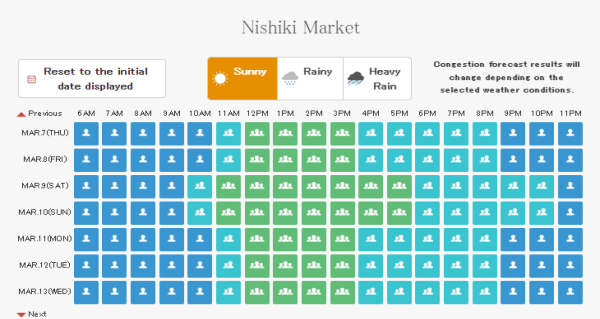
Nishiki Market Sightseeing Comfort Level Map (example)
Sightseeing Navi: Kyoto Sightseeing Comfort Level Map – Central Kyoto, Nishiki Market
https://global.kyoto.travel/en/comfort/central/
Nishiki Market Live Camera
Gion
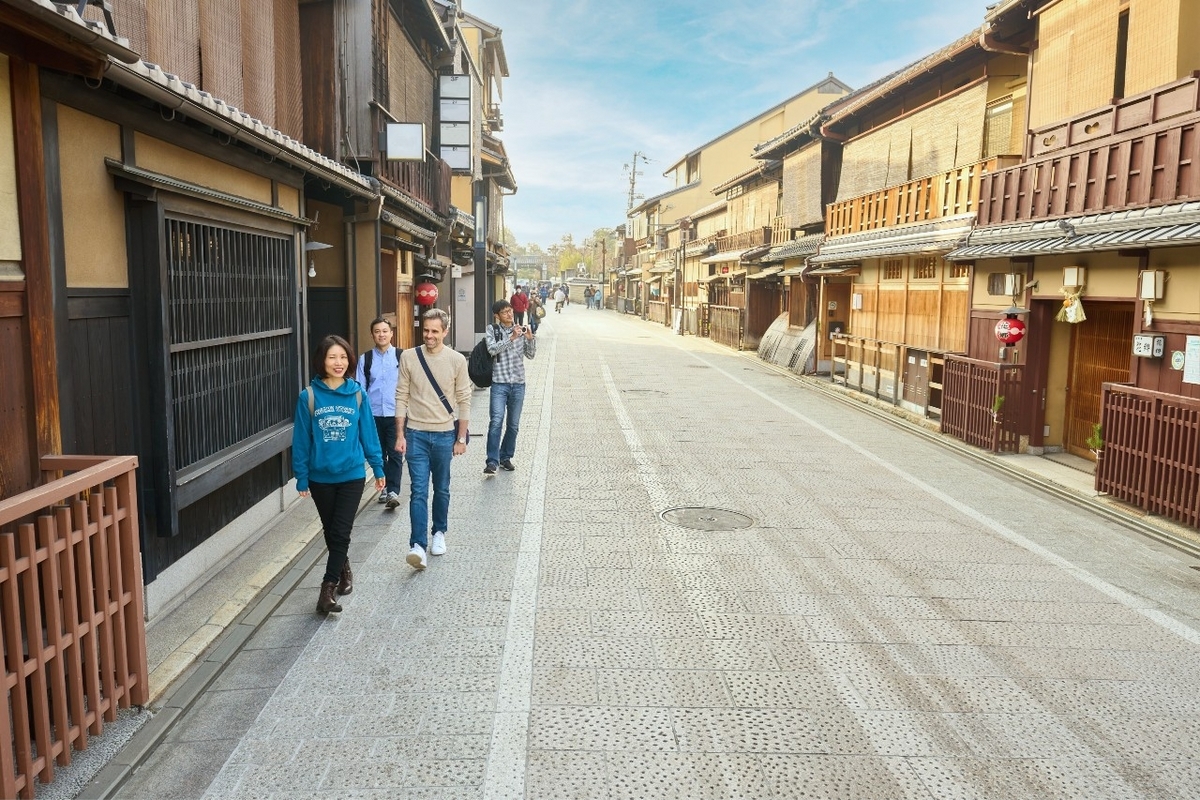 Gion is a glamorous area, boasting streets lined with tea shops. It is said that the area originally developed as a gate town in front of Gion Shrine (present-day Yasaka Shrine) with rest areas and tea shops for those who visited the shrine.
Gion is a glamorous area, boasting streets lined with tea shops. It is said that the area originally developed as a gate town in front of Gion Shrine (present-day Yasaka Shrine) with rest areas and tea shops for those who visited the shrine.
Even today, you can witness the picturesque sight of maiko and geiko (the regional term for geisha) walking along its traditional townscape. However, as this area has so strongly retained Kyoto’s traditional atmosphere, there are some manners you need to be aware of.
First, let’s talk about taking photos of maiko and geiko. Stopping them on the street and asking to photograph them, or taking pictures without their permission, is prohibited. Any time you see a maiko out in her beautiful attire, it means she has an engagement to attend and is in a hurry. Approaching and stopping them is a nuisance to them. They are also not to be treated as the mascots of a theme park or celebrities. Taking photos of specific individuals without their permission and posting those photos on social media constitutes a violation of portrait rights, so please be very careful.
Other actions to avoid include using a tripod to take photos of the townscape (this gets in the way of traffic), touching the lanterns outside tea shops, and leaning against fences.
Smart tip: Pedestrians walk on the stones on the sides of the road!
There is no specific distinction between the sidewalk and road on Hanamikoji Street, but different types of stones are used for the center and sides of the road to give the appearance of sidewalks, which makes it easier for people to walk. This design was made with both scenery and safety in mind.
Hanamikoji also makes its comfort level known and has a live camera feed installed.
Sightseeing Navi: Kyoto Sightseeing Comfort Level Map – Gion & Kiyomizu Area, Hanamikoji
https://global.kyoto.travel/en/comfort/gion-kiyomizu/
Hanamikoji Live Camera
Arashiyama

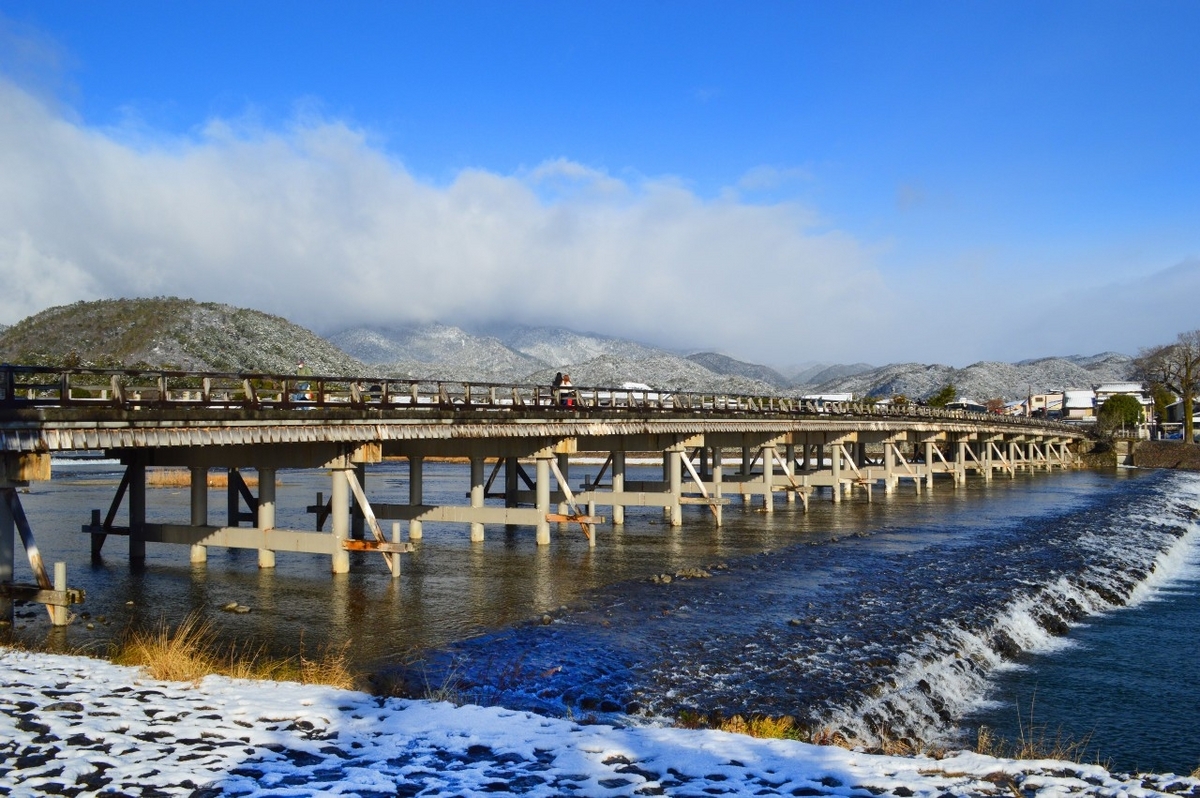
Arashiyama is home to Togetsukyo Bridge, the Bamboo Grove Road, Tenryuji Temple, and other attractions, making it one of the most popular spots in Kyoto. One thing to be especially careful about in Arashiyama is littering. Do your part to keep the scenery beautiful by always throwing away your trash in a trash can or taking it back with you. Please also note that walking onto the train tracks and smoking on the street are strictly prohibited.
Arashiyama Trash Can Map
Trash Can Map – See here for an enlarged image
Smart tip: Arashiyama Park (Kameyama Park) is a hidden gem!
Arashiyama always draws large numbers of visitors to see its beautiful cherry blossoms and fall foliage. For this reason, we recommend going there early in the morning and taking the relatively empty route through Kameyama Park to the Bamboo Grove Road. The observatory at Kameyama Park is also a great place to see some stunning scenery!
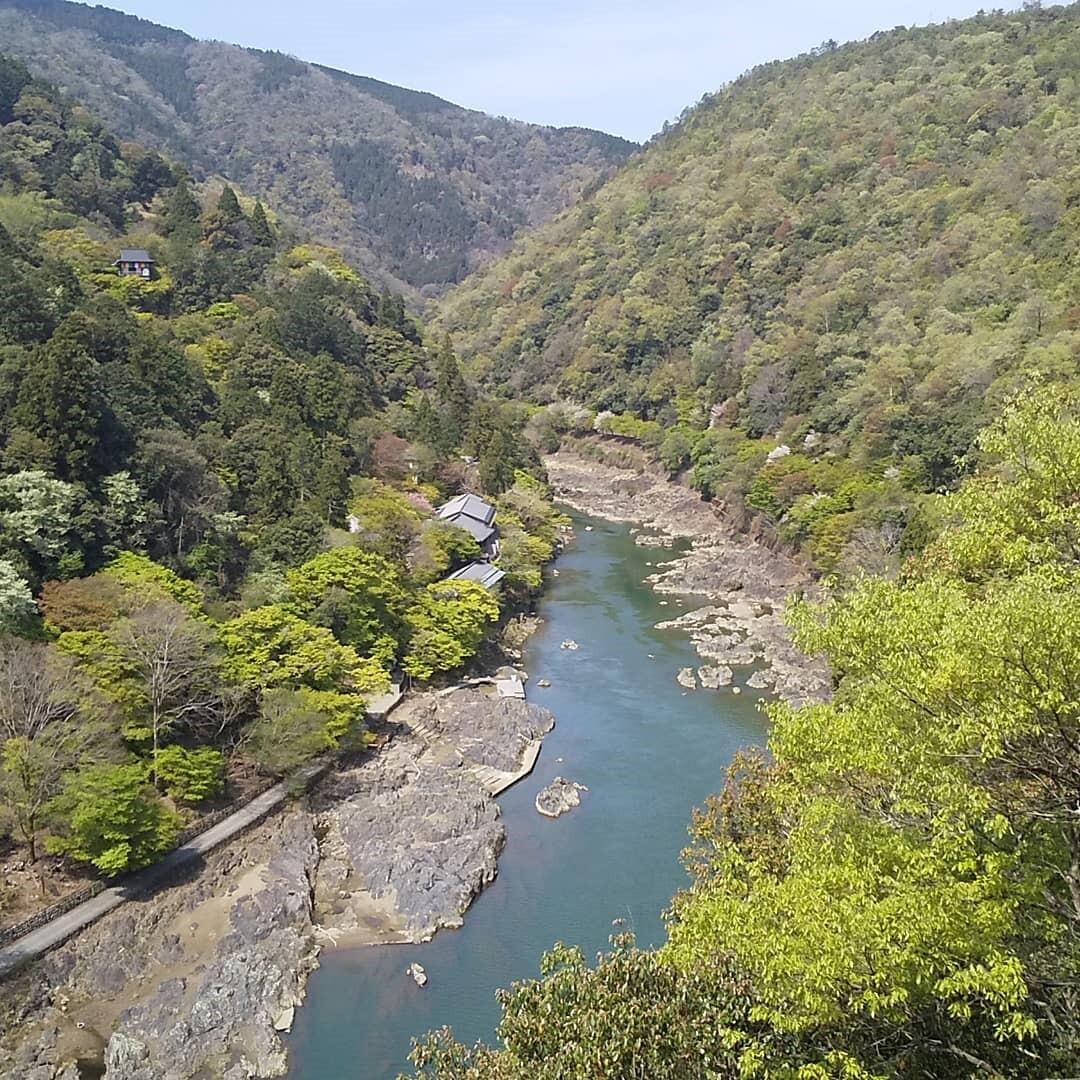
View from Kameyama Park Observatory
Sightseeing Navi: Kyoto Sightseeing Comfort Level Map – Arashiyama
https://global.kyoto.travel/en/comfort/saga-arashiyama/
Saga-Arashiyama/Togetsukyo Bridge North Side Live Camera
Saga-Arashiyama/Bamboo Grove Live Camera
In this section, we’ve talked about etiquette when sightseeing in Kyoto, but when traveling to any new place, it’s always important to be considerate of the culture and lives of the people there.
Keeping that in mind can also give you a fresh perspective from which to enjoy your travels.
So practicing good manners goes a long way in making your trip comfortable and enjoyable.
Related Articles
